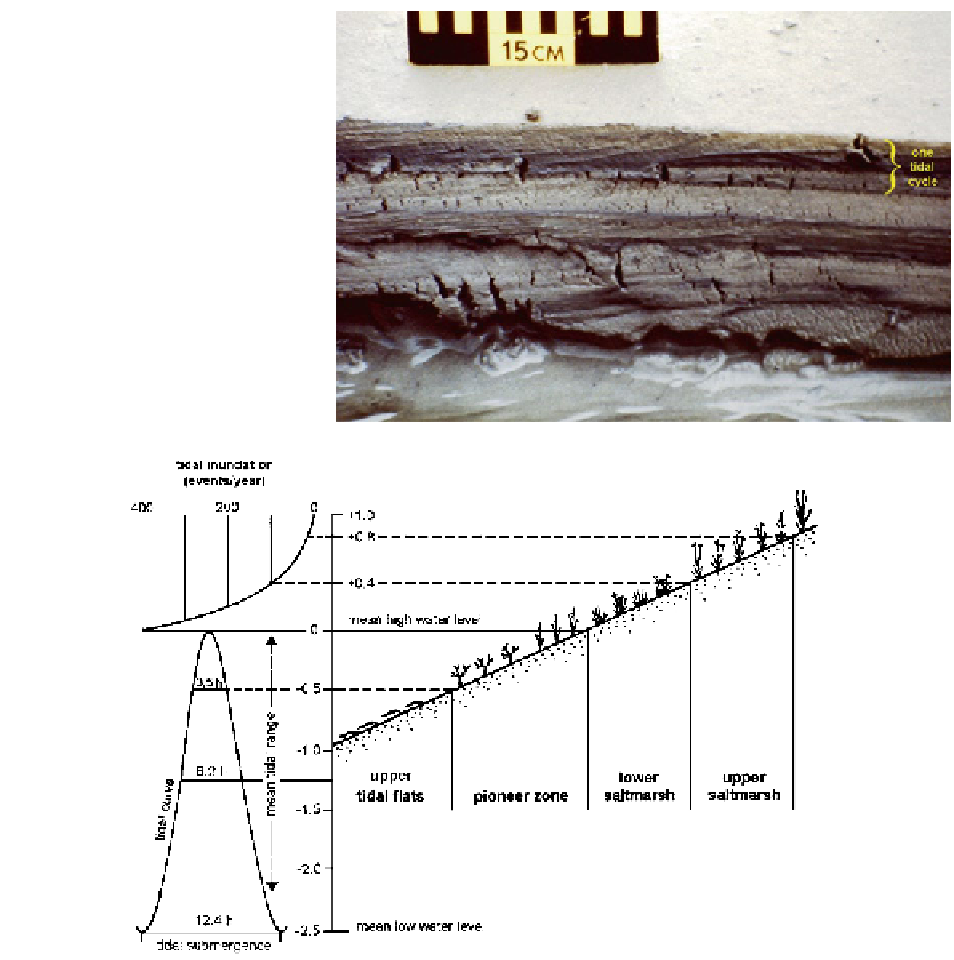Geology Reference
In-Depth Information
Fig. 10.20
Tidal bedding in
form of vertically stacked
mud-sand couplets along
laterally migrating intertidal
creeks. The mud settles out at
high tide and is subsequently
covered by a sand layer
during the following ebb tide
Fig. 10.21
Plant zonation pattern marking the transition from
tidal flat to salt marsh (Modified after Streif
1990
). In the
Wadden Sea, the pioneer zone, which is occupied by
Salicornia
sp. and
Spartina
sp., begins at the elevation where the duration
of tidal submergence is <3.5 h and terminates at the mean
high-tide level where the salt marsh proper begins. Note that salt
marsh zonation is primarily controlled by the annual frequency
of inundation by seawater
tidal creeks and/or longitudinal mud ridges separated
by erosional trenches (e.g., Gouleau et al.
2000
;
O'Brien et al.
2000
). In back-barrier tidal basins, the
monotonous muddy landscape only changes with the
onset of vegetation, the uppermost tidal flats being
colonized by so-called pioneer plants comprising halo-
phytes (e.g.,
Salicornia
and
Spartina
) which occupy a
zone between the elevation where tidal submergence is
<3.5 h (approx. 0.5 m below MHT in upper mesotidal
settings) and the mean high-water line (Fig.
10.21
).
The salt marsh proper begins at the mean high-
water line, the transition between the halophytes of the
pioneer zone and the salt resistant plants of the salt
marsh being exceptionally sharp. The salt marsh itself

